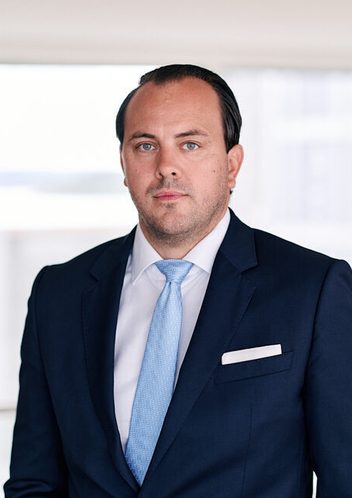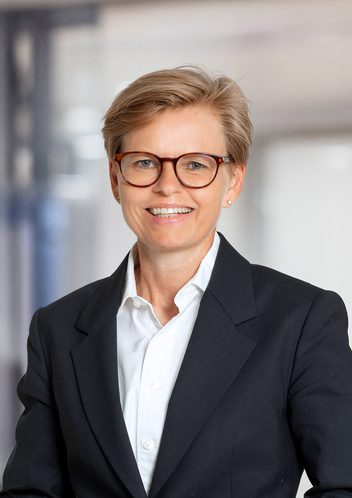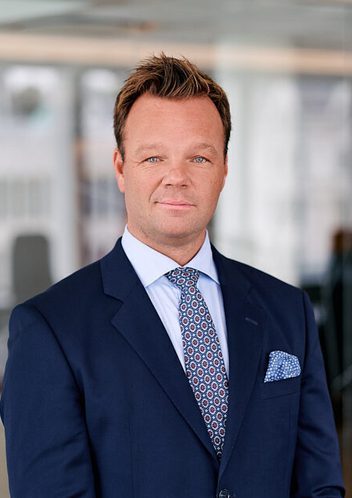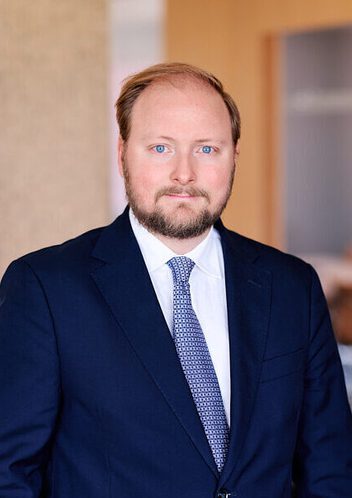
Bjarne Rogdaberg
Partner
Oslo
Newsletter
Published:
On 20 June 2025, four years after the new capital requirements regulations for investment firms entered into force in the EU, the Ministry of Finance presented the white paper for implementation of the rules in Norway (Prop. 156 LS (2024-2025)). The white paper contains some good news, including that there will be no bonus cap for risk takers in either class 2 or class 3 investment firms, in line with views expressed by Schjødt, among others, in the consultation. We summarise the main points below
As discussed in our newsletter of 4 April 2025, the EU's capital requirements rules (Investment Firm Directive (2019/2034), IFD) and Investment Firm Regulation (2019/2033), IFR) have already been adopted into the EEA Agreement. This means that everything is in place for a swift entry into force of the new rules as soon as the Ministry's proposal has been considered by the Norwegian parliament (Nw.: Stortinget).
The new rules divide investment firms into three classes, based on the size, the services provided and the scope of activities. Investment firms that are systemically important and have total assets of more than EUR 15 billion constitute class 1 firms and will continue to be subject to large parts of the capital requirements for credit institutions (CRR and CRD). Based on the Norwegian Financial Supervisory Authority's (Nw.: Finanstilsynet) preliminary assessments, no Norwegian investment firms will be categorised as class 1, and these will therefore not be discussed in more detail.
Class 3 firms are small and non-interconnected investment firms that do not execute orders, deal on own account or hold client assets or money and do not exceed a number of thresholds set out in article 12 of IFR, including with respect to income (EUR 30 million), capitalised and off-balance sheet assets (EUR 100 million), total assets (EUR 1,200 million) and orders handled per day (EUR 100 million or derivatives of EUR 1,000 million). The remaining investment firms are classified as class 2. Norwegian investment firms are assumed to be distributed fairly equally between classes 2 and 3.
Firms in classes 2 and 3 will no longer be subject to CRR and CRD, but to the more risk sensitive capital requirements rules for investment firms stipulated in the IFD and IFR. The class 3 firms are also exempt from a number of the regulations in the new legal framework.
Specific rules are introduced on remuneration schemes and variable remuneration for investment firms based on the principles that have so far applied via reference to the rules for credit institutions.
In the consultation paper, the Norwegian Financial Supervisory Authority proposed to retain the rule that risk takers may not receive variable remuneration of more than 100 per cent of the fixed remuneration, or 200 per cent if this has been approved by the general meeting for class 2 firms (bonus cap). However, in its renewed assessment of 4 April 2025, the Norwegian Financial Supervisory Authority advocated the discontinuation of this bonus cap, as argued by Schjødt in its consultation letter. In line with this, the Ministry proposes that no bonus cap shall apply to investment firms in either class 2 or class 3.
In addition, a significant change is that investment firms with assets of less than EUR 100 million are exempt from the requirements to (i) pay at least 50 per cent of the variable remuneration in the form of shares/restricted capital, (ii) defer at least 40 per cent of variable remuneration over a period of at least three years and (iii) withhold discretionary pension benefits in the form of shares, etc. for five years in case the employee leaves investment firm before retirement age.
The latter shall apply correspondingly to an individual whose annual variable remuneration does not exceed EUR 50,000 and which does not represent more than one fourth of that individual’s total annual remuneration.
2.1 Class 2 investment firms
Class 2 firms shall at all times have own funds that are at least the higher of (i) 25% of the previous year's fixed overheads, (ii) the permanent minimum capital requirement (Nw. startkapitalkravet) and (iii) the K-factor requirement.
The permanent minimum capital requirement is defined in the new section 9-41 of the Securities Trading Act, and will, in line with current rules, depend on the investment services provided by the firm, but the requirements are increased from EUR 50,000, EUR 125,000 and EUR 730,000 respectively, to EUR 75,000, 150,000 and 750,000 respectively. For firms operating an MTF or OTF, the claim is reduced (with some exceptions) from EUR 730,000 to EUR 150,000.
The K-factor requirement shall be the sum of K-factors for Risk-to-Client, Risk-to-Market and Risk-to-Firm, calculated in accordance with IFR Articles 15-24. The K-factors are variables that reflect the above-mentioned risks and are expected to result in lower capital requirements for investment firms than current requirements based on market risk, credit risk and operational risk.
The rules on the composition of own funds will be unchanged; CET1 capital must amount to at least 56 per cent, the sum of CET1 capital and Additional Tier 1 capital must amount to at least 75 per cent, and the sum of CET1 capital, Additional Tier 1 capital and Tier 2 capital must account for at least 100 per cent of the requirement.
Class 2 firms must have liquid assets corresponding to at least one third of the fixed overhead requirement.
When the annual accounts are published, the companies must also publish information on objectives and guidelines for risk management, corporate governance, own funds, capital requirements, remuneration policies and practices, investment policy and ESG risks. Supplementary provisions on the undertakings' reporting and publication are laid down in Regulation (EU) 2021/2284, which has been adopted to incorporate into the EEA Agreement.
Parent investment firms, parent investment holding companies and parent mixed financial holding companies must meet the requirements for own funds, capital requirements, concentration risk, liquidity, disclosure and reporting on the basis of their consolidated situation, cf. Articles 7 and 8 of the IFR. An organisational structure and internal control arrangements must be established to ensure that the necessary data for consolidation is submitted in an appropriate manner. Supplementary rules on consolidation are laid down in Regulation (EU) 2024/1771, which has been adopted to incorporate into the EEA Agreement
2.2 Class 3 investment firms
Class 3 firms shall at all times have own funds that are at least the higher of (i) 25 per cent of the previous year's fixed overheads and (ii) the permanent minimum capital requirement, cf. section 2.1 above.
The Norwegian Financial Supervisory Authority may exempt class 3 firms from the liquidity requirement mentioned in section 2.1 above. In the consultation, Schjødt advocated that such exemption should apply to all class 3 firms, but this was not followed up by the Ministry.
Class 3 firms that do not issue Additional Tier 1 instruments are exempt from the disclosure requirements mentioned in section 2.1 above, but must, as a general rule, meet the consolidated capital requirements.
In accordance with current regulations, class 2 firms shall have procedures in place to ensure the ongoing maintenance of capital and liquidity sufficient to cover relevant risks, cf. the new section 9-42 of the Securities Trading Act.
The Norwegian Financial Supervisory Authority may also apply the requirements mentioned in the previous paragraph to class 3 firms to the extent that this is deemed "appropriate". In the consultation, Schjødt argued that the conditions for applying these requirements on class 3 firms should be more clearly defined, but the Ministry placed greater emphasis on using the same wording as the IFD than on predictability for the class 3 firms.
New rules on corporate governance and risk management are proposed in Sections 9-44 to 9-47 of the Securities Trading Act, including a new risk committee requirement for investment firms with assets of at least EUR 100 million on average over the previous four-year period. Class 3 firms are (with a few exceptions) exempt from these rules.
In the consultation paper, the Norwegian Financial Supervisory Authority proposed that fund management companies and AIFMs that provide investment services and therefore are subject to capital requirements both under applicable fund legislation and the Securities Trading Act should be exempted from the latter. They should, however, be subject to the Securities Trading Act's rules on permanent minimum capital requirement (see section 2.1 above). This will be done through amendments to the Securities Funds Regulations and the AIF Regulations.
Furthermore, it is proposed that the calculation of own funds for fund management companies and AIFMs based on fixed overheads shall be made in accordance with Article 13 of the IFR, cf. Section 2-7(1)(b) of the AIF Act. This amendment is not considered to imply any material change.
The Ministry endorses the Norwegian Financial Supervisory Authority's proposal, however, changes to be made to supplementing regulations (such as the Securities Fund Regulation and the AIF Regulations) will be considered at a later stage.

Partner
Oslo

Partner
Oslo

Partner
Oslo

Partner
Oslo

Partner
Oslo

Partner
Stockholm

Associate
Oslo

Associate
Oslo

Senior Associate
Oslo
